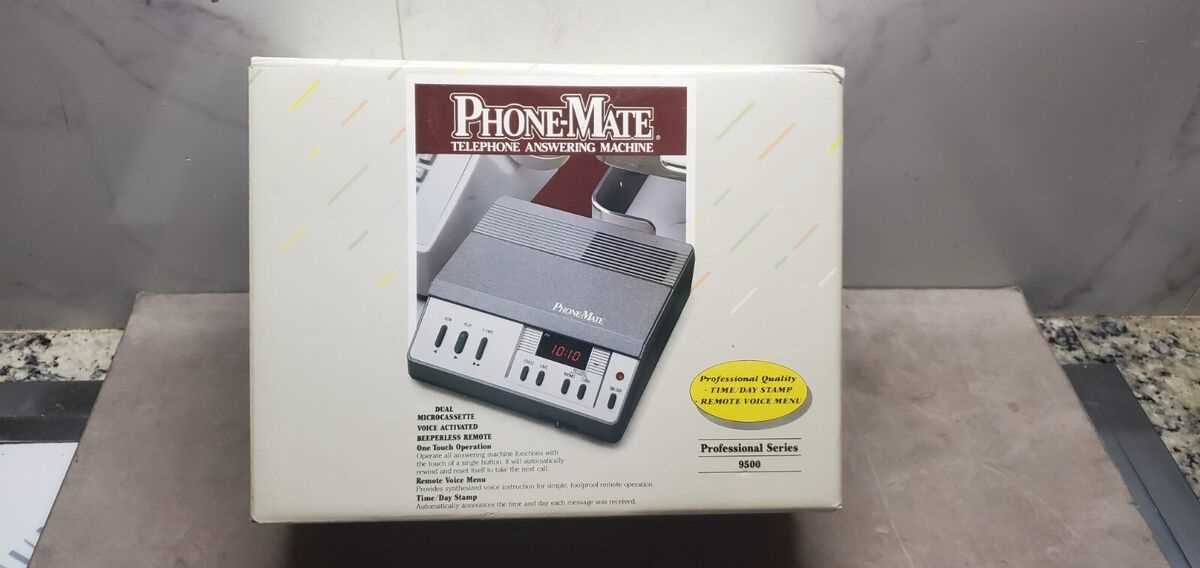
In today’s fast-paced world, creating an efficient and pleasant experience for callers is crucial for any business. When customers reach out and don’t get an immediate response, the recorded greeting they hear sets the tone for their entire interaction. This moment offers a unique opportunity to convey professionalism and establish a connection, even in the absence of live communication.
Whether it’s a simple notification or an informative message, the right approach can leave a lasting impression. A well-crafted voice response system ensures callers feel acknowledged and provides clear guidance on how to proceed. Choosing the proper voice, tone, and language can significantly impact the way your business is perceived, influencing customer satisfaction and trust.
Investing time and thought into these recordings not only improves efficiency but also enhances the overall customer journey. Effective recordings are more than just functional–they are an integral part of your brand’s communication strategy, ensuring that every caller feels valued and informed.
Creating Effective Answering Messages
When setting up a recorded message for your business, it’s essential to prioritize clarity, efficiency, and tone. The goal is to ensure that every caller receives the right information, without confusion or frustration, while also maintaining a friendly and welcoming atmosphere. A thoughtful and well-structured greeting can set the tone for the entire interaction and help guide callers through the next steps.
Here are some key strategies to consider when crafting a great recording:
- Be clear and concise: Keep the message brief while delivering all necessary information. Avoid long-winded explanations that might confuse the caller.
- Use a friendly tone: Choose a voice that reflects your brand’s personality, whether it’s warm, professional, or casual. A pleasant tone can make a big difference in the caller’s experience.
- State key information early: Mention the most important details–such as business hours, emergency contacts, or alternative ways to reach support–right at the beginning of the recording.
- Guide the caller: Provide clear instructions on what to do next, such as pressing a number for specific inquiries or leaving a voicemail. Avoid making callers guess their next step.
Additionally, it’s important to remember that the purpose of a recording is not just to inform, but to create a smooth experience for the caller. A message that is too rushed or overly formal can create a sense of detachment, while one that is too casual may seem unprofessional. Striking the right balance is crucial to keeping your communications efficient and personable.
Why Professional Audio Matters
The quality of your recorded greetings plays a significant role in shaping customer perceptions of your brand. When callers encounter a clear, well-crafted message, it communicates reliability and attention to detail. On the other hand, poor sound quality or unclear messaging can leave a negative impression and may cause frustration or confusion.
Building Trust Through Clear Communication
Clear and easily understood recordings help establish trust with callers. When a message is crisp and easy to follow, it signals that your business values effective communication. A professional-sounding recording reassures customers that their needs are taken seriously, fostering a sense of security and confidence in your services.
Enhancing Brand Identity
Your voice recordings are an extension of your brand. Just like your website, marketing materials, or in-person interactions, the tone, clarity, and style of your voicemail messages contribute to the overall identity of your business. By ensuring high-quality sound and carefully chosen language, you can create a consistent, polished image that aligns with your brand values.
Tips for Clear and Concise Messages
Creating effective recordings that convey important information without overwhelming the listener requires careful planning. It’s crucial to balance clarity with brevity, ensuring that the message is easy to understand and that key points are not lost. Whether you’re providing instructions, hours of operation, or alternative contact methods, keeping your message focused and to the point will improve the caller’s experience.
Prioritize Key Information
Start with the most important details. State your business hours, emergency contacts, or alternative methods of communication at the beginning of the recording. This way, even if the caller doesn’t listen to the entire message, they’ll get the essential information right away.
Avoid Unnecessary Details
While it’s important to be informative, too much information can create confusion. Stick to what’s relevant, and avoid lengthy explanations or irrelevant details. If additional information is necessary, provide instructions on how callers can access more details, such as through your website or by leaving a message.
Choosing the Right Voice for Your Brand
The voice you choose for your recordings plays a pivotal role in shaping how your business is perceived by callers. It’s not just about the words being spoken but also the tone, pacing, and overall style of delivery. Selecting the right voice ensures that your brand’s identity is consistently communicated, even when you’re not there to interact in person.
Reflecting Brand Personality
Consider how the voice aligns with your brand’s personality. A voice that conveys warmth and friendliness might be ideal for a customer service-oriented business, while a more authoritative and clear tone could suit a technical or professional service. The tone should resonate with the values and image you wish to project to your customers.
Consistency Across Channels
For a cohesive experience, ensure that the voice you choose for your recordings matches the voice used in other communication channels, such as your website or advertising materials. Consistency in tone and style helps reinforce your brand’s message and strengthens recognition, leading to a more unified customer experience.
How Tone Affects Customer Perception
The tone of your recorded greetings can significantly influence how customers perceive your business. Whether the voice sounds warm, neutral, formal, or casual, it directly impacts the caller’s experience and can shape their feelings about your brand. A well-chosen tone not only conveys the right emotions but also sets the overall atmosphere for the interaction.
Creating the Right Emotional Response
The emotional tone of your recording plays a key role in how customers react. Consider the following:
- Friendly and Warm: This tone helps customers feel welcome and valued, which can enhance trust and build rapport.
- Calm and Reassuring: A calm tone is ideal for businesses that deal with sensitive matters, like healthcare or legal services, as it provides comfort and stability.
- Confident and Clear: An authoritative tone can be perfect for industries where professionalism and clarity are essential, such as finance or technology.
Ensuring Consistency with Brand Values
The tone should align with your brand’s overall personality and messaging. For example, a creative agency may choose a more informal and upbeat tone, while a law firm would opt for a formal and professional sound. Consistency in tone across all communication channels ensures that customers can recognize and connect with your brand more effectively.
Crafting a Welcoming Greeting
Creating a warm and inviting introduction for your callers is crucial in making a positive first impression. A well-crafted greeting can set the tone for the entire interaction and helps ensure that customers feel valued and respected, even when you’re not available to answer the phone personally. It’s an opportunity to reflect your brand’s personality and create a sense of trust and professionalism.
When designing your greeting, keep in mind the following elements:
- Be polite and friendly: A warm, courteous tone helps build a rapport with callers right away, making them feel welcome and appreciated.
- Provide assurance: Let the caller know they’ve reached the right place and that their call will be attended to. Reassurance builds confidence and reduces frustration.
- Keep it concise: While it’s important to sound welcoming, be mindful of time. Keep your greeting short and to the point to avoid frustrating the caller.
Example: “Hello and thank you for calling [Company Name]. We’re sorry we missed your call, but your inquiry is important to us. Please leave a message, and we’ll get back to you as soon as possible.” This simple, direct greeting balances professionalism with a friendly tone, ensuring the caller feels valued while providing clear instructions.
Setting Expectations for Callers
When callers reach your business, providing them with clear instructions about what to expect during their interaction is crucial for creating a smooth experience. By managing their expectations upfront, you reduce uncertainty and ensure they know what steps to take next. Whether it’s letting them know when they can expect a callback or explaining how to proceed with specific inquiries, setting expectations helps maintain professionalism and customer satisfaction.
Here are some important aspects to consider when setting expectations for callers:
| Aspect | Action |
|---|---|
| Response Time | Inform callers about when they can expect to hear back, whether it’s within a few hours or the next business day. |
| Alternative Options | Provide guidance on other ways to reach support, such as email or live chat, if available. |
| Message Instructions | Encourage callers to leave detailed information for quicker follow-up, including their name, contact number, and the purpose of the call. |
| Business Hours | Clearly state your operating hours so that callers know when they can expect immediate assistance. |
By addressing these key points in your recording, you not only provide a better experience for callers but also create a more efficient system that benefits both your team and your customers. Ensuring clarity on response times and available options helps reduce frustration and improve customer satisfaction.
Personalization in Automated Messages
Personalizing your recorded greetings can significantly enhance the caller’s experience, making them feel more connected to your brand. Instead of using generic statements, incorporating personalized elements–such as the caller’s name or specific information related to their needs–creates a sense of individual attention. This small but impactful adjustment helps foster a more engaging and positive interaction, even in an automated environment.
Here are some ways to integrate personalization into your recordings:
- Use the Caller’s Name: If possible, ask for the caller’s name at the beginning of the call and use it within the message. This simple step can make the interaction feel more friendly and individualized.
- Reference Past Interactions: If you have a system that tracks previous calls or interactions, you can mention specific details from prior conversations, helping to make the caller feel recognized and valued.
- Tailor the Message to the Situation: Provide context-specific information based on the time of day, holidays, or special promotions. For example, a message might say, “Thank you for calling us today. Due to the holiday, our response time may be longer than usual,” ensuring the caller knows what to expect.
Personalization is an effective tool for building rapport with callers, creating a more humanized experience in an otherwise automated setting. By adjusting your recordings to suit the specific needs and context of each caller, you can boost customer satisfaction and strengthen brand loyalty.
Common Mistakes to Avoid in Voicemails
Voicemails are a crucial part of customer communication, but poorly crafted recordings can lead to confusion, frustration, and missed opportunities. Whether you’re setting up an automated greeting or leaving a message for someone else, it’s important to avoid common pitfalls that can negatively impact the caller’s experience. By understanding these mistakes, you can improve the effectiveness of your recordings and ensure clear, professional interactions.
Here are some common mistakes to avoid:
- Too Long or Too Short: A voicemail that is too long can frustrate the caller, while a message that is too short may not provide enough information. Strive for a balanced message that is both concise and informative.
- Unclear Instructions: Be sure to give clear directions about what the caller should do next, whether it’s leaving a message, waiting for a callback, or using another communication method.
- Monotone Delivery: A flat or emotionless tone can make the message sound impersonal and uninviting. Ensure the voice is warm and engaging to keep the listener’s attention.
- Lack of Contact Information: Always include essential details like your business hours, the best way to reach someone, or alternative contact methods if applicable. Missing this information can leave the caller uncertain about how to proceed.
- Excessive Background Noise: Background sounds can distract from your message and make it hard to understand. Record in a quiet environment to maintain clarity and professionalism.
Avoiding these mistakes can significantly improve the quality of your voicemails, making them more effective and enhancing the overall experience for your callers. Clear, concise, and well-crafted recordings help build trust and ensure better communication with your audience.
When to Update Your Answering Messages

Keeping your recorded greetings up to date is essential for maintaining clear communication with your customers. As your business evolves, so should the way you interact with callers. Outdated recordings can cause confusion, frustrate your audience, and even create missed opportunities. Knowing when and why to update your recorded messages ensures that callers receive accurate and relevant information, reflecting the current state of your business.
Key Times to Consider Updates

There are certain instances when updating your recordings becomes especially important. Here are some key times to keep in mind:
| Situation | Action |
|---|---|
| Seasonal Changes | Adjust your greetings to reflect changes in business hours, holiday schedules, or special promotions. |
| Staffing Changes | Update messages if staff members leave or new personnel join your team, especially if you mention names or departments. |
| Business Hours Changes | Ensure your callers are aware of any modifications to your regular hours, such as extended hours or temporary closures. |
| Service Updates | Make sure to reflect any new services or products, or changes to existing ones, so callers have the most up-to-date information. |
Why Timely Updates Matter

By updating your recordings in a timely manner, you ensure that your communications remain relevant, professional, and helpful. This reduces the likelihood of confusion and enhances customer satisfaction. Regularly reviewing and refreshing your recordings is an easy yet impactful way to demonstrate that your business is active, engaged, and attentive to customer needs.
Recording High-Quality Audio
Clear and crisp recordings are essential for effective communication. Whether you are creating a greeting or a response, the quality of the sound plays a significant role in how your message is received. Poor sound quality can cause misunderstandings, frustration, or even lost business opportunities. To ensure your recordings are professional and easy to understand, it’s crucial to pay attention to the details of the recording process.
Here are some tips to help you achieve high-quality recordings:
- Choose the Right Equipment: Invest in a high-quality microphone and recording equipment. A dedicated microphone will capture your voice more accurately than a built-in laptop or phone microphone.
- Record in a Quiet Environment: Background noise can disrupt the clarity of your message. Ensure you’re recording in a quiet space with minimal distractions to maintain professional sound quality.
- Use Soundproofing Techniques: If possible, record in a space with good soundproofing. Simple steps like closing doors and windows, or using soft materials to dampen noise, can make a big difference.
- Monitor Volume Levels: Avoid recording too quietly or too loudly. Ensure your levels are balanced to avoid distortion or muffled sound, keeping the message clear and pleasant to listen to.
- Maintain Consistent Tone and Speed: Speak clearly and at a moderate pace. A steady, even tone will help maintain listener engagement and ensure your message is easily understood.
By focusing on these factors, you can ensure that your recordings are of the highest quality, making a positive impression on every listener.
Effective Use of Silence and Pauses
Strategically placed pauses and moments of silence can greatly enhance the clarity and effectiveness of your recorded communication. These subtle elements can help guide the listener’s attention, giving them time to process important information or allowing your message to feel more natural and human. When used appropriately, pauses can make your content more engaging and professional, leaving a lasting impression on your audience.
Why Silence and Pauses Matter
Pauses are not just spaces between words; they help with pacing and tone, making your message easier to follow. Well-timed breaks allow the listener to absorb key information, especially in longer recordings. Silence can also convey thoughtfulness and allow you to emphasize important details.
Best Practices for Using Pauses
- Pause Between Key Points: When transitioning between different sections or topics, a brief pause can help listeners mentally prepare for the next part of your message.
- Use Silence for Emphasis: A well-placed pause before or after a significant point can help emphasize its importance and give the listener a moment to reflect.
- Avoid Overusing Pauses: Too many pauses can disrupt the flow of the message. Use them sparingly to avoid creating unnecessary gaps or confusion.
- Maintain Natural Rhythm: Ensure that your pauses feel natural and not forced. A message delivered with a smooth rhythm is much easier to listen to and more engaging.
- Keep Pauses Consistent: Make sure your pauses are consistent in length to maintain a steady flow and avoid awkwardness in the delivery.
Incorporating well-timed pauses into your recordings enhances both the structure and impact of your communication. When done correctly, silence becomes a powerful tool to ensure your message is delivered effectively and leaves a professional impression.
Best Practices for Multi-Language Greetings
When interacting with a diverse customer base, providing greetings in various languages is an excellent way to make individuals feel welcomed and valued. A multilingual approach not only broadens accessibility but also strengthens customer relationships by showing respect for different cultures and preferences. However, creating effective greetings in multiple languages requires careful attention to detail to maintain clarity, consistency, and professionalism.
To achieve the best results, businesses should consider a few key guidelines when crafting their multilingual scripts. From proper language selection to ensuring smooth transitions between languages, these practices help foster positive interactions with all callers, regardless of their linguistic background.
Key Guidelines for Multi-Language Greetings
- Identify Primary Languages: Understand which languages are most commonly spoken by your customers. This allows you to prioritize the most relevant languages, ensuring you meet the needs of your audience.
- Keep It Simple: Avoid complex phrasing or idiomatic expressions. Ensure that the language is straightforward and easy to understand for both native and non-native speakers.
- Use Quality Translations: Invest in professional translation services to ensure that your content is accurately conveyed. Avoid relying on automated translation tools, as they may lead to misunderstandings.
- Consistency Across Languages: The tone and message should remain consistent across all languages. This helps maintain a uniform brand voice and ensures your message is coherent.
- Provide Language Options Early: Allow callers to select their preferred language at the beginning of the interaction. This eliminates frustration and ensures that the greeting is delivered in the most comfortable language for the caller.
Example of Multi-Language Greeting

Here’s an example of how a multi-language greeting can be structured in a simple and clear manner:
| Language | Greeting |
|---|---|
| English | Thank you for calling. Please hold for the next available representative. |
| Spanish | Gracias por llamar. Por favor, espere mientras le conectamos con el siguiente representante disponible. |
| French | Merci d’appeler. Veuillez patienter pendant que nous vous mettons en relation avec le prochain représentant disponible. |
By following these best practices, you can create a welcoming and effective multilingual experience that meets the needs of a global audience and ensures a seamless customer experience for everyone.
Handling Technical Issues in Messages
In any automated system or communication setup, technical difficulties can arise, leading to disruptions or poor user experiences. It’s essential to be prepared for these challenges and to handle them effectively within your recorded content. When problems occur, clear communication is key to keeping customers informed and ensuring they feel heard, even if they are unable to reach a live representative immediately.
Dealing with technical issues in your system requires offering transparent, timely information to users. This could involve notifying callers about system outages, delays, or any other type of service interruption. While maintaining professionalism, it’s important to ensure that the caller’s concerns are addressed in a calm and reassuring manner.
Best Practices for Handling Technical Difficulties
- Inform Early: Always inform callers about potential issues at the start of the call. Let them know if there’s a known delay or if service may be impacted.
- Offer Alternatives: If there is a significant issue, provide alternatives for reaching support or accessing help, such as directing them to an online help page or offering callback options.
- Maintain a Reassuring Tone: While addressing issues, ensure the tone of the message remains calm, friendly, and reassuring. This will help maintain trust despite the disruption.
- Update Regularly: If technical issues persist, update your recorded greetings to reflect the current status. Customers appreciate knowing when the issue will be resolved or if further delays are expected.
Example of a Clear and Helpful Notification
Here’s an example of how to communicate a technical issue effectively:
“We’re currently experiencing technical difficulties with our system. We apologize for the inconvenience and are working hard to resolve the issue. In the meantime, please feel free to leave a message, and we’ll get back to you as soon as possible.”
By being transparent, providing alternatives, and maintaining a positive tone, you can manage technical issues efficiently and ensure callers have a positive experience despite any disruptions.
Legal and Privacy Considerations for Messages
When creating recorded content for customer interactions, it is crucial to be mindful of legal and privacy concerns. Many regions have strict regulations regarding the collection and storage of personal information, and failing to comply with these laws can lead to serious consequences for businesses. This section highlights the importance of adhering to privacy standards and legal requirements when designing voice prompts and automated responses.
One of the primary considerations is ensuring that any personal data, such as names, contact details, or payment information, is not inadvertently captured or used without consent. Additionally, businesses must be transparent about their data usage practices, informing customers about how their information will be handled and stored. This ensures both compliance with laws and the protection of customer trust.
Furthermore, specific laws like the General Data Protection Regulation (GDPR) in the European Union or the California Consumer Privacy Act (CCPA) in the United States mandate businesses to obtain explicit consent before collecting personal data. In some cases, callers must be informed that their interaction is being recorded for quality or training purposes. Failure to provide this information can result in legal penalties and damage to a company’s reputation.
To avoid privacy issues, businesses should:
- Notify Callers: Ensure that callers are aware of recordings and their purpose. This can be done by including a brief disclaimer at the beginning of the interaction.
- Limit Data Collection: Avoid collecting unnecessary personal details through automated systems. Gather only the information required for the task at hand.
- Secure Data Storage: Any collected data should be securely stored and only accessible to authorized personnel.
- Respect Opt-Out Requests: Provide customers with the option to opt-out of certain data collection practices or to interact with a live agent instead of using the automated system.
By adhering to legal guidelines and respecting privacy, businesses can foster customer trust and ensure they are compliant with regulations, thereby protecting themselves from legal issues.
Improving Customer Experience with Audio
Enhancing the overall experience of your clients often begins with the quality and clarity of the sounds they encounter when interacting with your business. Whether it’s through phone systems, interactive prompts, or on-hold messages, how you communicate through sound can significantly influence a customer’s perception of your service. By focusing on a few key elements, companies can create more engaging and satisfying interactions that leave a lasting positive impression.
One of the most effective ways to improve customer satisfaction is by ensuring clarity and warmth in every interaction. A clear, articulate voice that maintains a friendly and welcoming tone can immediately make callers feel at ease. The absence of heavy jargon or robotic-sounding responses is equally important in helping customers feel understood and valued.
Additionally, timing plays a crucial role. Strategic pauses, appropriate pacing, and the careful use of silence can make information easier to process. Customers tend to appreciate when important information is spaced out clearly, allowing them time to absorb details and make decisions without feeling rushed. Well-placed pauses can help guide them through complex tasks or provide them space to ask further questions.
To further enhance the experience, consider integrating sound elements like music, sound effects, or even personalized greetings that align with your company’s branding. These elements, when used thoughtfully, can reinforce the company’s personality and make the entire experience feel more personalized and engaging.
Here are a few practical tips to boost customer satisfaction through sound:
- Maintain a friendly tone: Choose voices that sound warm, approachable, and professional without being too formal.
- Be clear and concise: Avoid using overly complex language or long-winded responses. Directness and simplicity are key to keeping your audience engaged.
- Use appropriate pacing: Avoid rushing the information. Pauses and slow pacing help callers follow the information more easily.
- Offer personalized touches: Including the caller’s name or tailored options can make the interaction feel more customized and welcoming.
By prioritizing the quality of sound in all customer interactions, businesses can ensure that every step of the process feels efficient, pleasant, and supportive–leading to an improved overall experience and stronger customer loyalty.